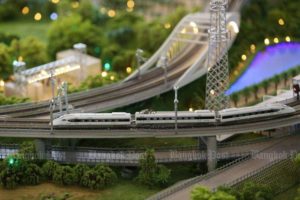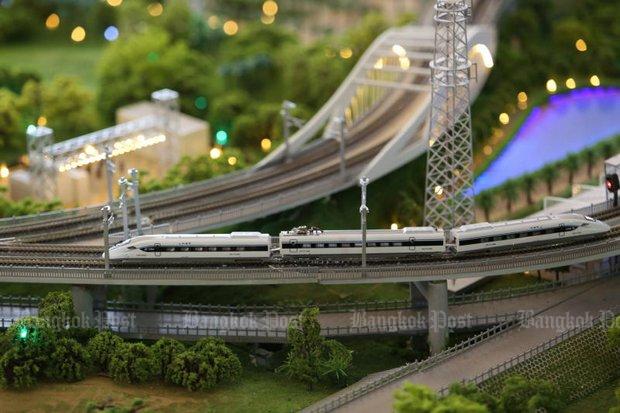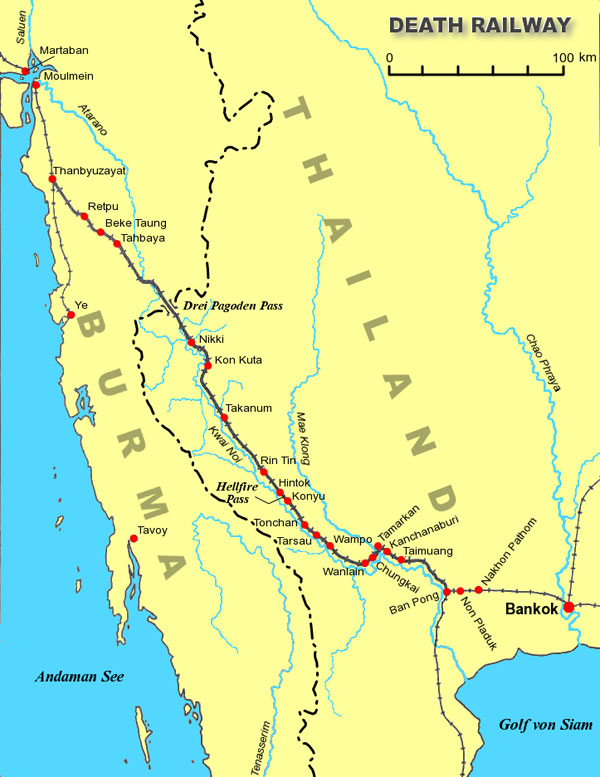
Sino-Thai high-speed rail project from Bangkok to Nakhon Ratchasima is tipped to go ahead as planned
Ayutthaya train station height cut
The Thai-Sino high-speed rail project from Bangkok to Nakhon Ratchasima is tipped to go ahead as planned now that the design for one of its stations has been changed.
Related ministries have agreed to reduce the height of an elevated track at a train station in Ayutthaya from 19 to 17 metres to avoid any impact on the province’s nearby historical park that is a Unesco World Heritage site.
The decision was made at an online meeting chaired by Transport Minister Saksayam Chidchob.
Also present were Natural Resources and Environment Minister Varawut Silpa-archa, Culture Minister Itthiphol Kunplome, and representatives of local residents.
 Speaking after the meeting, Mr Saksayam said that the meeting was a follow-up on the previous one on June 10 to find ways to address problems related to the construction of the train station.
Speaking after the meeting, Mr Saksayam said that the meeting was a follow-up on the previous one on June 10 to find ways to address problems related to the construction of the train station.
The meeting agreed that the high-speed train project has followed all of the necessary related laws and regulations, he said.
In order to allay concerns over any impact of the construction on the historic sites, the meeting decided that the rail bridge at the station will be reduced, the minister said.
He added that the opinions from the other two ministries will be also presented to the cabinet to come up with guidelines for the construction of the train project.
Local administration organisations will also be asked to issue regulations to ensure buildings around the station will not be higher than legal limits, Mr Saksayam said.
He added that Thailand will also send a Heritage Impact Assessment (HIA) report on the matter to the Unesco World Heritage Centre in Paris.
The Thai-Sino high-speed train project covers 253 kilometres from Bangkok to Nakhon Ratchasima in the Northeast.
The Thai government has paid more than 179 billion baht for the construction project which is divided into 14 contracts whereas the Chinese government is responsible for overseeing design and construction work, supplying the railway signalling systems and train carriages, and training personnel.
Construction of the 13.3-kilometre Ban Pho-Phra Kaeo section hit a snag as the Unesco World Heritage Centre raised concern that the design for the elevated rail track at the Ayutthaya station, might have an impact on the landscape of the historic sites.
This is despite the planned train station being about two kilometres away from the province’s World Heritage-listed historic sites.
On May 24, the National Committee on the World Heritage Convention agreed that a tunnel should be built for the train to pass underground the historic sites or the construction site should be relocated.
The committee also ordered the State of Railway of Thailand to conduct an HIA report.
According to the original design layout, the multi-storey train station will serve long-haul trains, with the high-speed train operating on the top storey.
Previously, the Transport Ministry came up with some alternatives to the planned train station, the sources said.
One involved building a station and a 5-kilometre underground tunnel for trains to pass under the historic sites which would cost about 15.3 billion baht and take about five years.
Another option involved relocating the train station to a new construction site 30 metres away from the historic sites.
This would cost about 26 billion baht for construction, with more than 3,700 rai of land to be expropriated.
It would take about seven years, the sources said.
Another option was that the train station would remain at the original location, but the area must be subject to new city planning to keep commercial development around the area in check.
This would cost about 80 million baht and take about one year, the sources said.
However, all these alternative plans would entail additional costs to conduct environmental impact assessment, which would delay the construction further, the sources said, adding that this would affect the installation of the rail signalling systems by the Chinese government.
The National Committee on the World Heritage Convention last December ordered the State Railway of Thailand to ease the impact of the project on the historical sites in Ayutthaya.
Source: https://www.bangkokpost.com/business/2187279/sino-thai-rail-line-back-on-track


